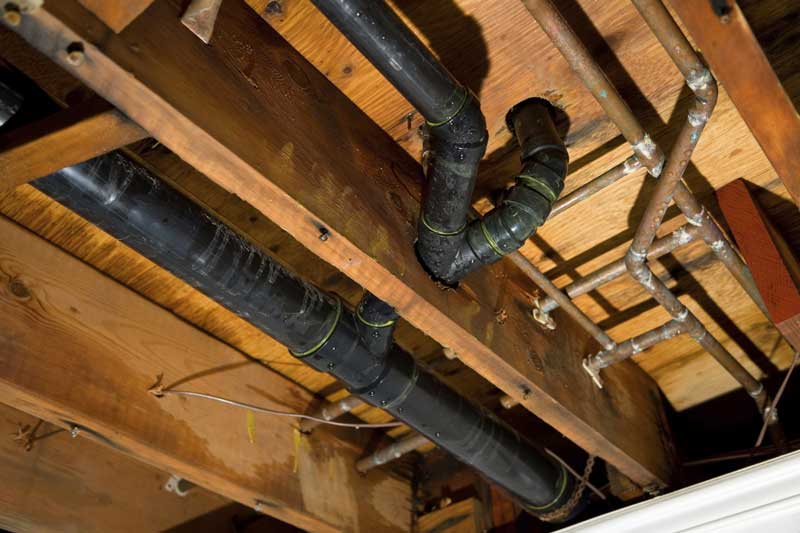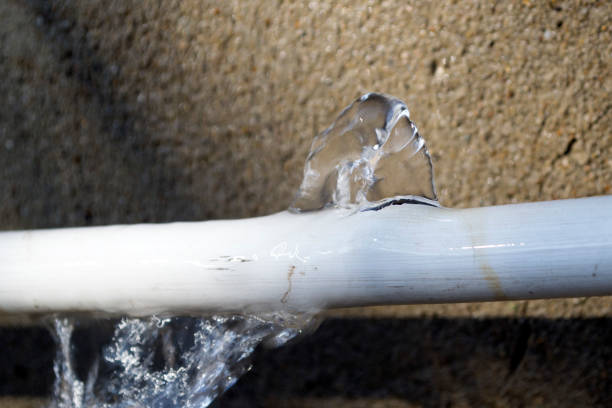Your Guide to Plumbing Issues in Older Homes
Your Guide to Plumbing Issues in Older Homes
Blog Article
We've encountered this great article pertaining to Main Plumbing Issues Found in Old Houses down the page on the net and felt it made perfect sense to share it with you in this article.

Older homes typically feature beauty, character, and background, yet they can likewise bring a host of plumbing concerns. Whether you're handling maturing pipes, low tide pressure, or leaks, knowing just how to deal with these usual issues is critical to preserving a safe and practical home. In this guide, we'll check out the typical pipes challenges dealt with by older homes and offer practical options to maintain your plumbing in leading shape.
Comprehending Typical Pipes Issues
Aging Pipelines
Among the most usual issues in older homes is maturing pipes. Depending upon the period in which your home was developed, the pipelines might be made from materials that have actually weakened with time, such as galvanized steel, cast iron, or even lead. These products can wear away, become breakable, or create leakages, resulting in water damages and prospective health hazards.
Water Top Quality Testing
Older pipelines can affect the quality of your water. Conduct a water high quality examination to check for pollutants such as lead, corrosion, or other pollutants that might be presented by maturing pipes.
Solutions for Common Plumbing Problems
Replacing Aging Pipes
If your home has old, degrading pipelines, take into consideration replacing them with modern products like copper or PEX. This can be a significant investment, but it will avoid future issues and boost the safety and security and reliability of your plumbing system.
Repairing Low Water Pressure
To take care of low tide stress, beginning by cleaning or replacing old fixtures and removing mineral buildup in the pipes. If the issue continues, it might be needed to change areas of rusty pipelines.
Fixing and Replacing Leaking Pipes
For little leaks, you can utilize pipe clamps or epoxy putty as a momentary fix. However, it's best to change dripping pipelines totally to avoid additional damages.
Upgrading Fixtures
Upgrading old fixtures to modern, water-efficient versions can boost your home's plumbing efficiency and lower water intake. Try to find components with the WaterSense label for the best effectiveness.
Handling Pipe Corrosion
If your pipelines are worn away, changing them with corrosion-resistant materials like copper, PVC, or PEX is the best service. Regular inspections and water top quality upkeep can assist avoid further corrosion.
Low Tide Stress
If you're experiencing low water pressure, maybe because of mineral deposits, corrosion inside the pipes, or old components that are no longer functioning successfully. This can be a significant hassle, especially in areas like showers and sinks.
Dripping Pipes
Leakages are one more frequent concern in older homes, commonly caused by corroded or damaged pipes. Also little leaks can bring about considerable water damage, mold and mildew development, and increased water costs if not resolved immediately.
Outdated Fixtures
Out-of-date plumbing components such as faucets, commodes, and showerheads not only look old however may also be less efficient, susceptible to leaks, or incompatible with modern plumbing standards.
Pipeline Corrosion
Rust is a common issue in older pipelines, especially those made from galvanized steel or actors iron. Rusty pipes can restrict water circulation, cause staining, and eventually cause leaks or pipeline ruptureds.
Evaluating the Problem of Your Plumbing
Checking Noticeable Pipelines
Begin by inspecting any type of noticeable pipes in your house, such as those in basements, crawl spaces, or under sinks. Try to find indications of deterioration, leaks, or corrosion, which can show underlying concerns.
Checking for Leakages
Look for leakages by checking locations around taps, commodes, and under sinks. You can likewise check your water meter prior to and after a period of no water make use of to find covert leakages.
When to Call an Expert
While some pipes problems can be handled with do it yourself services, there are times when it's best to call in a specialist. If you're managing major leakages, substantial corrosion, or are unclear concerning the problem of your pipes, a certified plumbing technician can offer professional analysis and fixing.
Preventive Upkeep Tips
Regular Inspections
Regularly check your plumbing system for indicators of deterioration. Capturing problems early can stop pricey repair services down the line.
Water Stress Policy
Guarantee your water pressure is within the suggested array to prevent stressing your pipelines and components. A plumber can install a pressure regulatory authority if required.
Water Quality Maintenance
Set up water filters or conditioners if your water quality is poor. This can protect your pipes and fixtures from damages brought on by tough water or impurities.
Aggressive Pipeline Replacement
If your home has very old pipelines, consider aggressive substitute prior to major issues arise. This can conserve you from emergency repair work and water damage.
Conclusion
Dealing with pipes problems in older homes needs a mix of caution, precautionary maintenance, and timely upgrades. By understanding the usual obstacles and understanding when to seek specialist assistance, you can ensure your pipes system continues to be practical and reputable for years ahead.
Common Plumbing Issues in Older Homes and How to Fix Them
Owning an older home in Australia comes with its unique charm and a set of challenges, especially when it comes to plumbing. The Sunshine Coast has many older properties that can harbour plumbing problems that aren t just inconvenient but potentially costly. Here s a look at some common plumbing issues in older homes and expert advice on how to handle them.
Outdated Piping Materials
Many older homes were built with galvanised steel, cast iron, or even lead pipes, materials that are far from ideal by today s standards. Galvanised pipes are prone to corrosion and clogging, while lead pipes pose serious health risks.
How to Fix:
Replacing old pipes is a job for a professional. Upgrading to copper or PVC piping not only enhances water quality and flow but also increases the property s safety and value. If you suspect your home has outdated materials, a licensed plumber can conduct a thorough inspection and recommend the best course of action.
Corrosion and Pipe Degradation
Over time, exposure to water and minerals can cause pipes to corrode, leading to leaks, bursts, and water contamination. Corrosion is especially common in homes over 50 years old.
How to Fix:
Regular inspections can catch early signs of corrosion. If corrosion is found, the affected section of piping often needs to be replaced. For homes with extensive corrosion, a complete plumbing overhaul might be necessary. It s crucial to consult with a plumbing expert to understand the extent of the issue.
Tree Root Intrusion
Older neighbourhoods usually have mature trees whose roots can intrude into pipe lines, causing blockages or damage. This is particularly problematic for sewer lines, where roots seek out water sources.
How to Fix:
A plumber can use a specialised camera to inspect sewer lines for root intrusion. If roots are a problem, methods like root cutting or hydro-jetting can clear the obstruction. In severe cases, part of the pipe may need replacing. Consider root barriers around the piping to prevent future issues.
Inadequate Water Pressure
Low water pressure in older homes can be due to various factors, including corroded water lines, sediment build-up in pipes, or outdated fixtures.
How to Fix:
First, check if the low pressure is isolated to one area or throughout the house. Replacing old fixtures can sometimes resolve the issue. However, if the problem is more widespread, it might be due to sediment or corrosion. Flushing the system or replacing the affected pipes usually restores normal pressure. Again, a professional assessment is advisable.
Outdated Fixtures
Older homes often feature fixtures that are not only visually dated but functionally inefficient. This includes everything from toilets and taps to showerheads and washing machine hoses.
How to Fix:
Updating these fixtures can improve both water efficiency and the aesthetic appeal of your home. Modern fixtures are designed to conserve water, which can significantly reduce your water bill and lessen your environmental impact.
Conclusion
Maintaining the plumbing in an older home requires a proactive approach. Regular checks and updates are key to preserving these beautiful properties. If you re facing plumbing issues in your older home, it s best to call on experienced professionals like Green & Gold Plumbing & Gas. With the right expertise, even the most daunting plumbing problems can be resolved, ensuring that your home s character is maintained while its functionality is enhanced.
https://gandgplumbing.com.au/common-plumbing-issues-in-older-homes-and-how-to-fix-them/

I stumbled upon that write up about Plumbing Issues in Older Properties and How to Fix Them while doing a search on the search engines. You should take a moment to promote this article if you appreciated it. I am grateful for your time. Please come by our blog back soon.
Book Appointment Report this page